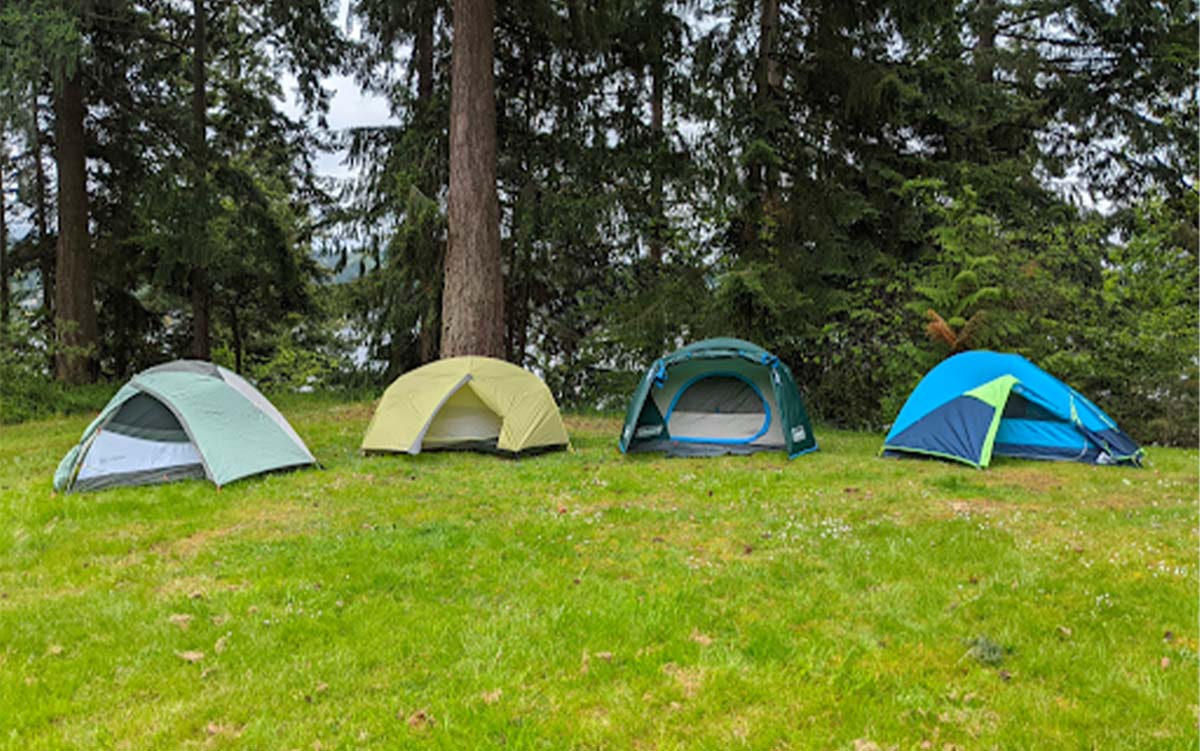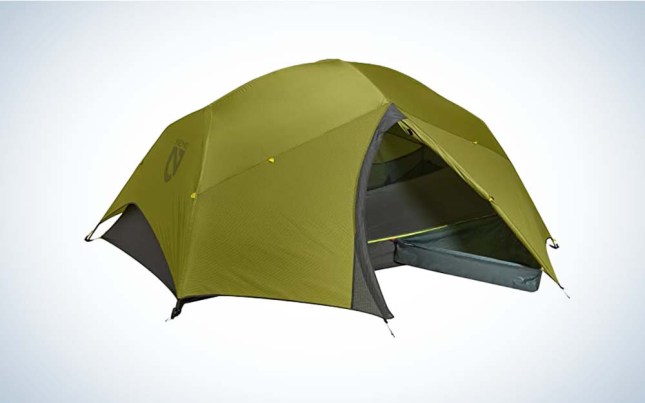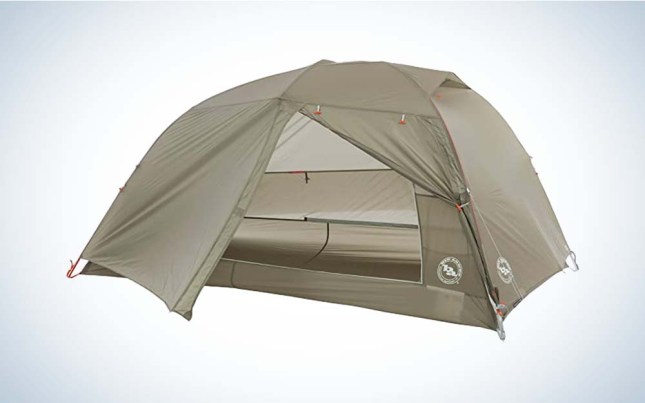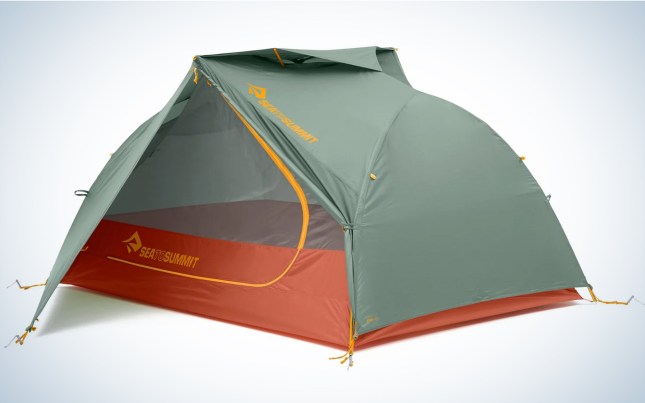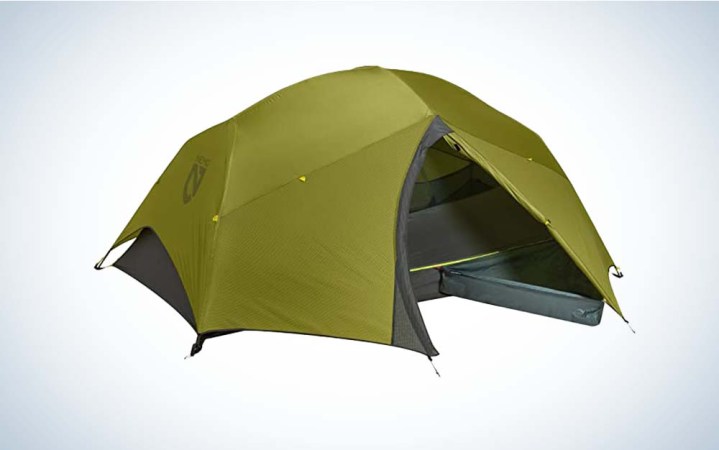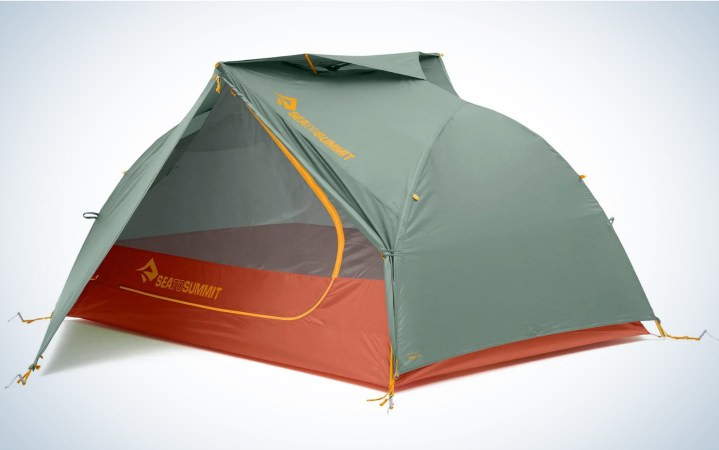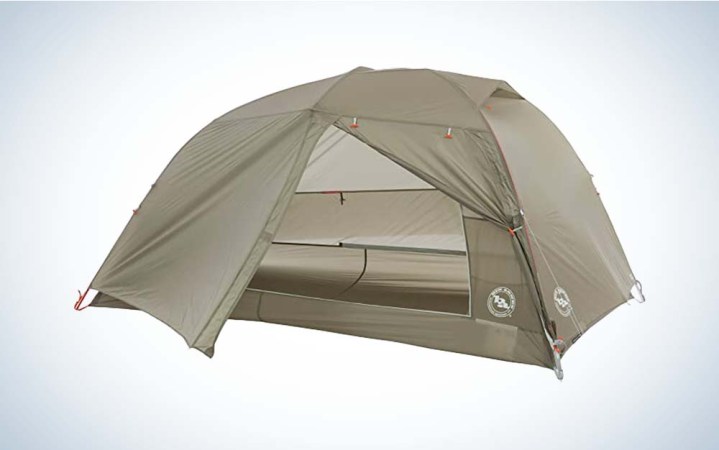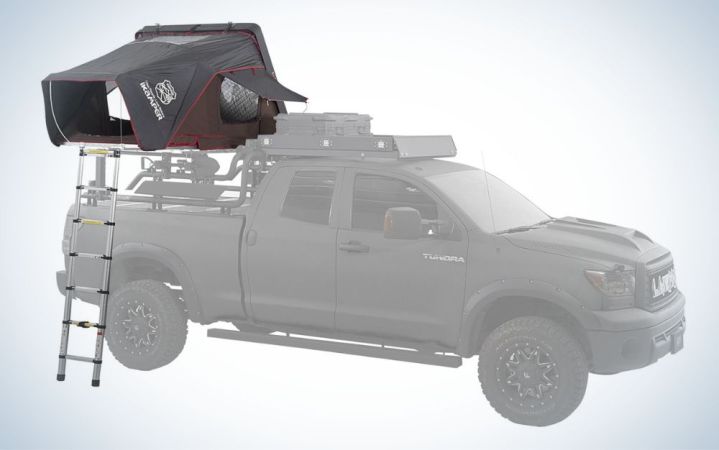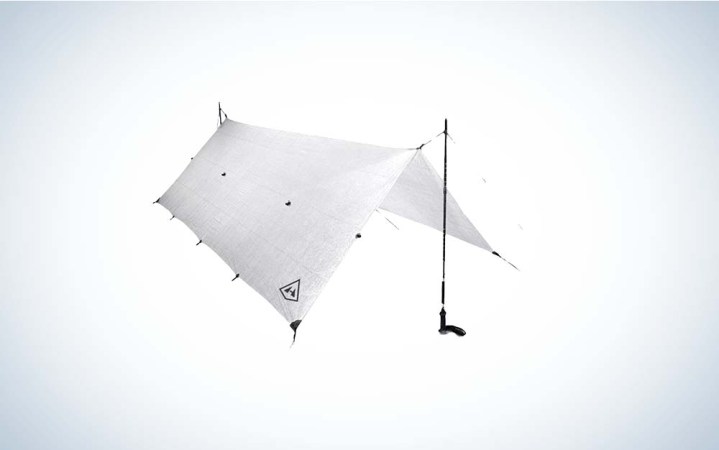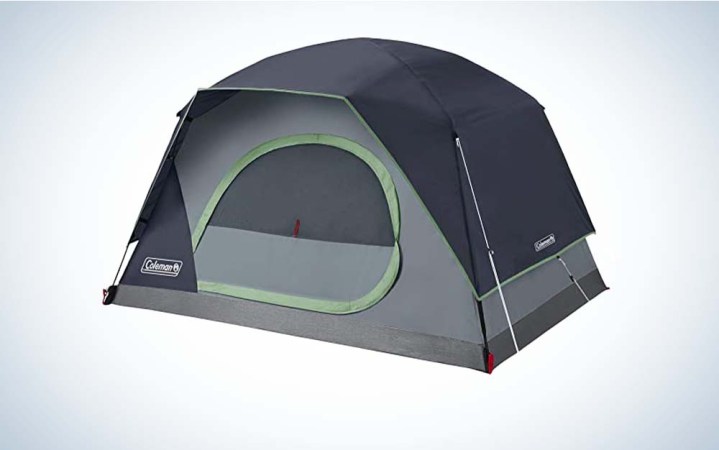We may earn revenue from the products available on this page and participate in affiliate programs. Learn More ›
With hundreds of 2-person tents on the market, built for everything from car camping to roof tops, mountaineering to ultralight hunting, it can be hard to know where to start. However, over the last several months the Outdoor Life gear team has been testing tents built for a number of different categories. To ease your search, we narrowed down the field to following best 2-person tents available today:
- Best Overall: NEMO Dagger OSMO 2P
- Best Value: Sea to Summit Ikos 2
- Best Backpacking: Big Agnes Copper Spur HV UL2
- Best Roof Top Tent: iKamper Skycamp Mini
- Best Camping Tarp: Hyperlite Mountain Gear Ultralight Flat Tarp
- Best Budget: Coleman Skydome 2-Person Camping Tent
How I Chose the Best 2-Person Tents
I’ve tried, and watched others try, numerous tents over hundreds of nights in nine different states, pitching them on everything from alpine meadows to old-growth forests while long-distance backpacking to casual car camping. I’ve had my fair share of mishaps in tents, from getting flooded in Southern California to being blown off a sand dune outside of Death Valley, to bringing the wrong poles for my winter tent during a snowshoeing overnight in Olympic National Park.
The Outdoor Life gear team tested the best backpacking tents, camping tarps, and roof top tents to eventually select the best 2-person tents. The best overall tent was chosen based on its versatility. Everyone from first-time users to experienced outdoor enthusiasts can take the NEMO Dagger OSMO 2P backpacking, overlanding, and car camping.
Best 2-Person Tents: Reviews & Recommendations
Best Overall: NEMO Dagger OSMO 2P
Key Features
- Weight: 4 pounds, 2 ounces
- Floor Dimensions: 90 inches x 50 inches
- Peak Height: 42 inches
- Number of Poles: One
- A comfortable fit for two people
Pros
- Large interior square footage and headroom
- Small packed size
- Intuitive setup that is storm ready with minimal fussing
- Optional storage tub provides additional moisture protection for gear stored outside your tent
- No added PFAS or fire-retardant chemicals
Cons
- Expensive
- Recommend purchasing the separate ground sheet
You wouldn’t think that an extra square foot or two of space would make such a difference, but the NEMO Dagger OSMO 2P shows that, with a couple thoughtful tweaks and a few extra ounces, you can get car-camping worthy comfort out of a backpacking-ready 2-person tent.
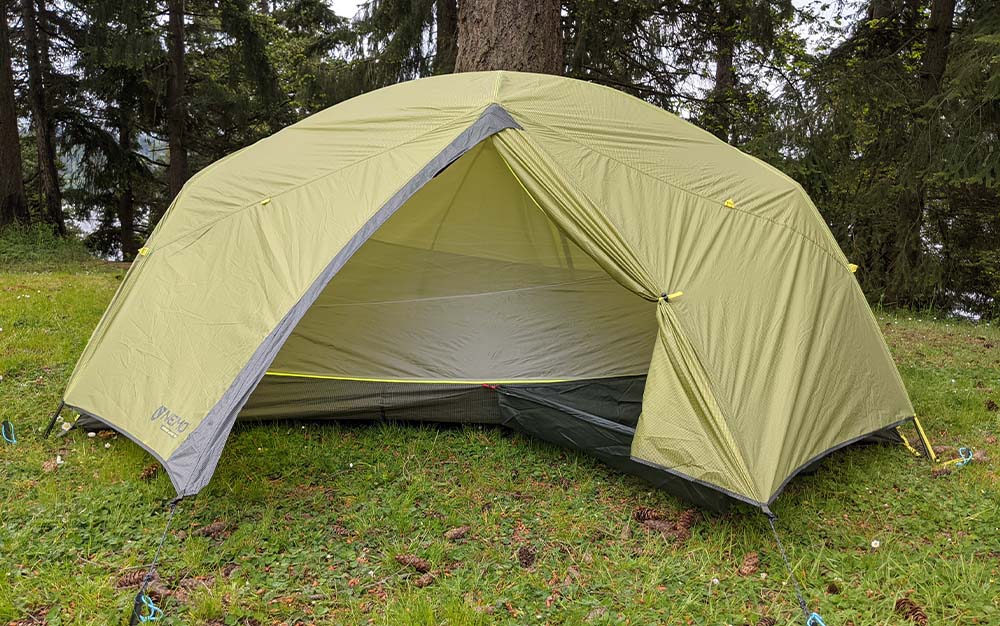
Unlike other tents on this list, the NEMO Dagger OSMO 2P was intuitive to set up. I never needed to look at the directions. The symmetrical design means that the single pole, which looks a little strange, poking out in six directions, can be set up in either direction. The Jake’s foot pole end might have been difficult to connect to the corner of the tent body, but a helpful tag at that corner showed me exactly what to do. Another thoughtful detail is the inclusion of a small bathtub floor that clips into the vestibule, so you can protect your backpack (or hiking shoes, if you are car camping) from puddles while stashed outside of your tent on a rainy day. I also appreciated how taut the rainfly pulled during setup, even before I adjusted the tension in the webbing straps.
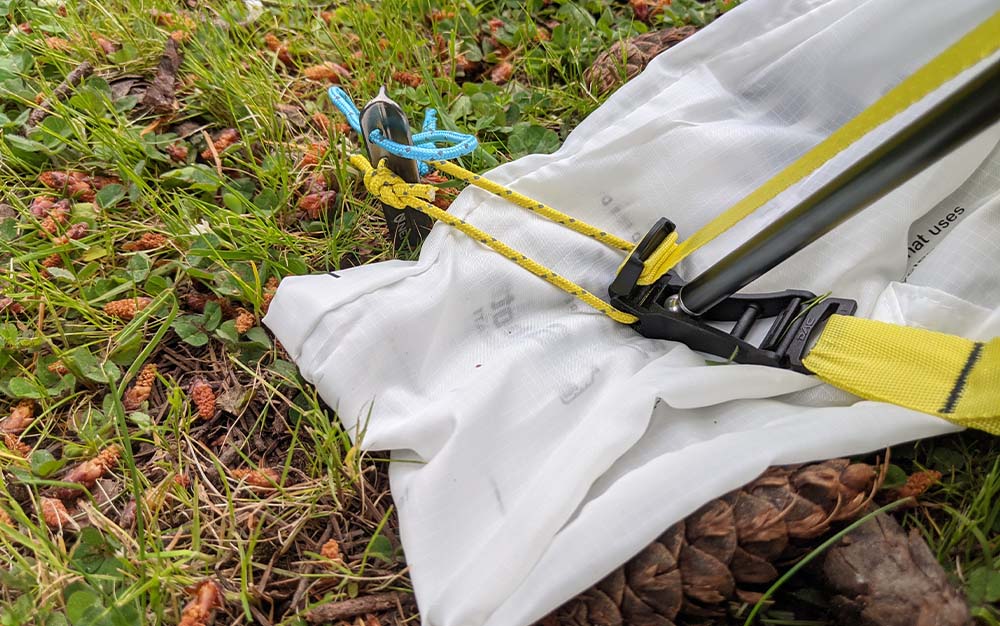
Given that the floor of this tent is made out of a relatively thin 30D ripstop nylon (similar to many of our best backpacking sleeping pad picks), I wish NEMO had included the footprint as part of the package. If you plan to regularly camp on anything more substantial than moss, it’s worth adding one (or even two) to your cart at checkout.
Best Value: Sea to Summit Ikos TR2
Key Features
- Weight: 5 pounds, 3.6 ounces
- Floor Dimensions: 84.5 inches x 53 inches
- Peak Height: 41 inches
- Number of Poles: One
- A comfortable fit for two people
Pros
- Excellent headroom
- Durable material
Cons
- On the heavy side for backpackers
The truth is that quality tents, something that will last you for years and see you through all manner of conditions, are expensive. That goes double for tents that are light enough to take backpacking: poles and tent fabrics that are light enough to keep your base weight under 20 pounds while still having what it takes to withstand heavy winds and rains come at a premium.
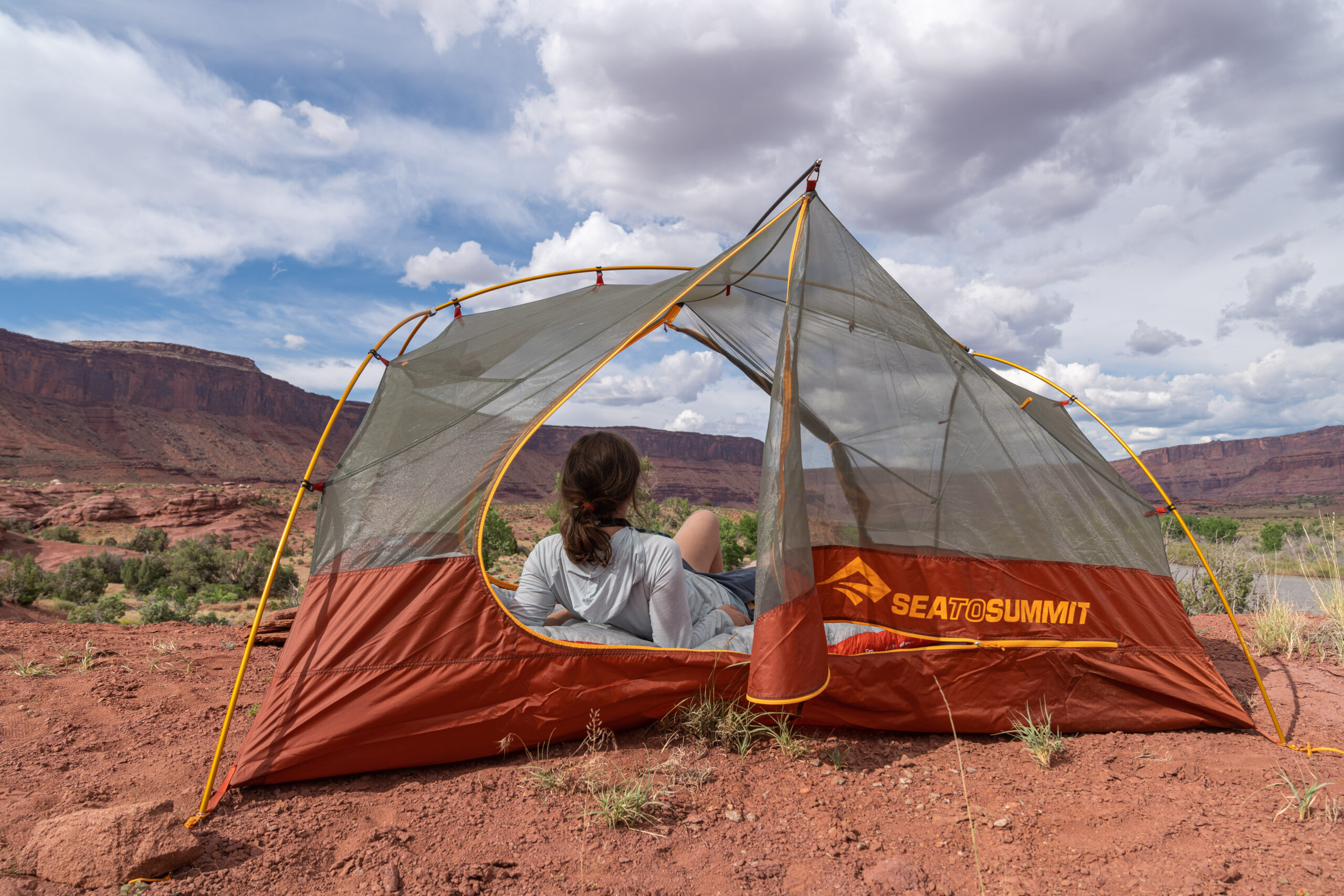
The Sea to Summit Ikos TR2 does a great job of balancing these considerations. It’s over a hundred dollars less expensive than our best overall pick, while only coming in at about a pound heavier. And it’s built for serious conditions, something I discovered first-hand when strong winds threatened to blow the Ikos TR2 off a scenic cliffside pitch. The tri-beam stakes (the design of all of the best tent stakes) held where I was able to pound them into the hard packed sand. The nylon webbing survived where I had piled rocks on top of it without visible abrasion. The poles stood firm without issue (nearby tents were knocked), and the tent floor looked no worse for wear where it had scraped across the ground. It was an impressive performance.
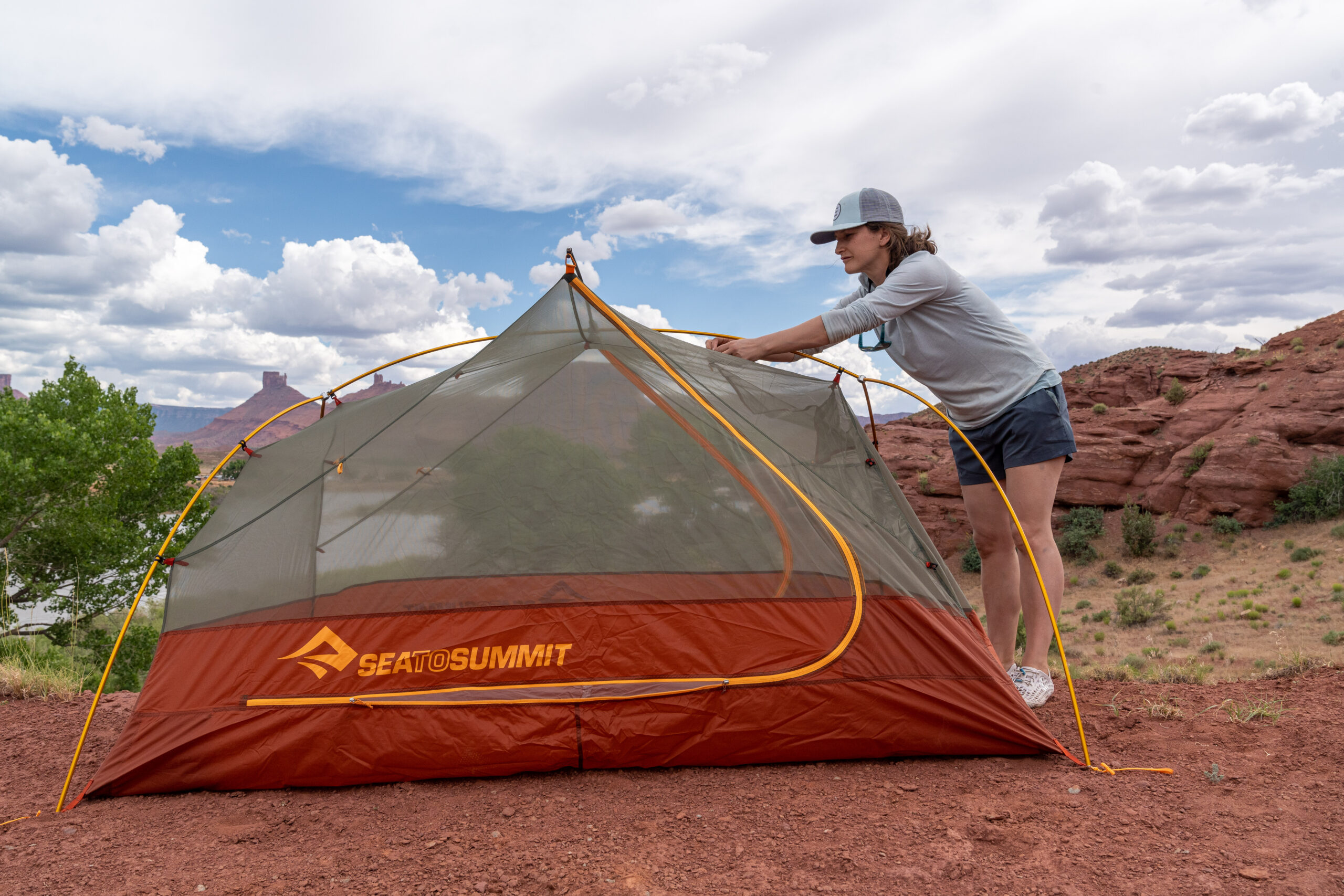
Its excellent structural design is also notable for having the most headspace of any tent I’ve used. Whereas the center pole of most 2-person tents bend downwards, the Ikos TR2 is designed to bend upward. This maximizes the headspace across the center of the tent, making it that much more comfortable for two people to share.
Best Backpacking: Big Agnes Copper Spur HV UL2
Key Features
- Weight: 2 pounds, 11 ounces
- Floor Dimensions: 88 inches x 52 inches with a tapered foot
- Peak Height: 40 inches
- Number of Poles: Two
- A tight fit for two people
Pros
- Lightweight
- Packs down small
- Fast and easy setup
Cons
- Tapered foot makes it difficult to sleep in opposite directions
This tent has become a mainstay of the lightweight backpacking community for good reason. It perfectly balances low weight with long-term durability and an intuitive setup—two people exhausted by a big day on trail can easily set up this tent in a couple of minutes. I’ve seen backpackers take the Copper Spur everywhere from thru-hikes of the John Muir Trail to casual trips on the Olympic Coast, and it’s performed equally well in all environments.
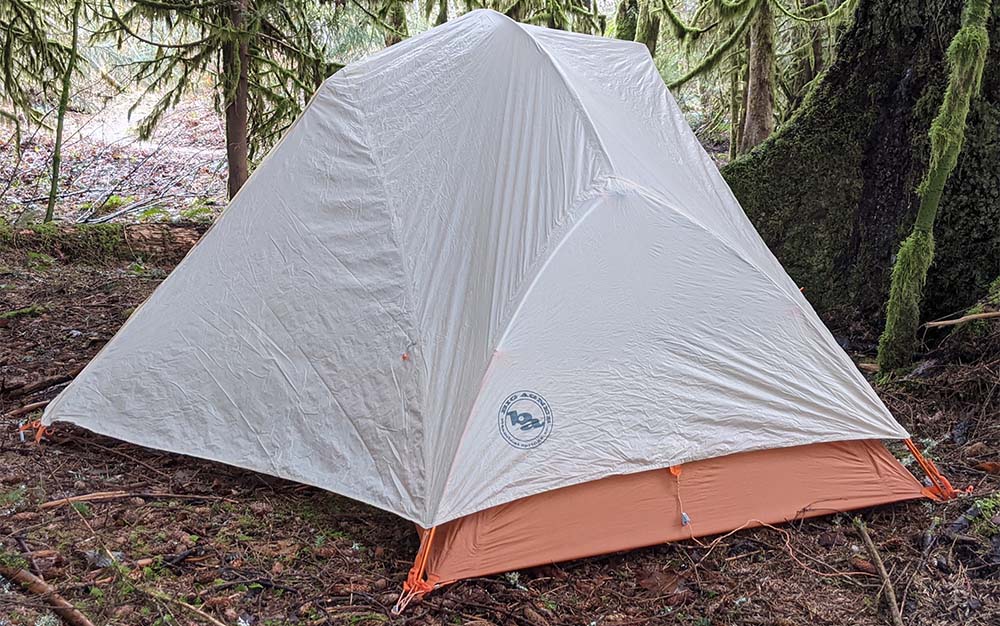
Like many lightweight tents, treating this one with some TLC will extend its lifespan over the long haul—I recommend taking along the five-ounce accompanying ground sheet and choosing tent sites free of branches or burrs that could snag on the rainfly.
This has long been one of the top choices for couples heading out on longer adventures into the backcountry, but some men have found that it’s a bit cozier than they’d like when a friend squeezes in. A longer version of this tent came out in 2023 that should make it easier to sleep facing opposite directions, as well as stash bags inside, if necessary.
Best Roof Top Tent: iKamper Skycamp Mini
Key Features
- Weight: 125 pounds
- Dimensions: 83 inches x 51 inches
- Peak Height: 48 inches
- Number of Poles: Two
- Sleeps two people comfortably
Pros
- Small enough to fit on just about any vehicle
- Hardshell case protects the tent
- Same design as the Skycamp 2.0 and should work great for all season
Cons
- Smaller means less room and it’s a little snug
- Priced higher than some similarly sized tents
There are a number of advantages to having a rooftop tent over a traditional camping tent. It simplifies setup, which can be advantageous when trying to get settled after dark. It maximizes the number of surfaces you can camp on—so long as the ground is level, it should work fine. Finally, it provides protection (or at least peace of mind) against some of the creepy crawlers on the ground.
iKamper wanted to make sure just about anyone could get a roof top tent, and that led to the Skycamp Mini. Modeled after the popular Skycamp 2.0, the Mini weighs 35 pounds less and, at 125 pounds, comes in well below the 150-pound mark a lot of vehicles max out at when it comes to rooftop weight. To showcase this, the company advertises the Mini on top of a MINI Cooper to get their point across. However, this is also a popular option for truck beds as well.
Best Camping Tarp: Hyperlite Mountain Gear Ultralight Flat Tarp
Key Features
- Weight: 8.9 ounces
- Dimensions: 8 feet x 10 feet
- Peak Height: Variable
- Number of Poles: Two
- Sleeps two people comfortably
Pros
- Extremely lightweight
- Extremely packable
Cons
- Expensive
- Requires experience to set up correctly
Even a lightweight 2-person tent can monopolize space in your pack if you aren’t careful. So, if you’re on a quest for a sub 10-pound base weight, it might be time to turn to the world of tarps. The Hyperlite Mountain Gear Flat Tarp has fully bonded seams and excellent UV resistance, and it doesn’t even crack nine ounces (assuming you’ve brought along some trekking poles to help support the interior space). With innumerable setups, there is a variation for just about any three-season condition you anticipate encountering, but the trick is that you’ll need to master the art of the setup to ensure you stay dry, and your shelter stays erect, when conditions start to deteriorate. Still, this camping tarp makes an excellent and lightweight option as one of the best 2-person tents.
Best Budget: Coleman Skydome 2-Person Camping Tent
Key Features
- Weight: 9 pounds, 10 ounces
- Floor Dimensions: 84 inches x 60 inches
- Peak Height: 48 inches
- Number of Poles: Three
- A roomy fit for two people
Pros
- Tallest ceiling of any 2-person tent I’ve tested
- Low price
- Heavy-duty bathtub floor excels at keeping puddles at bay
Cons
- Small vestibule door
- Fly setup is less straightforward than the tent
You’ll inevitably spend a little more time in your tent car camping than backpacking. Lazy early mornings, an outfit change after your afternoon hike, pre-dinner nap—so you want a tent that you, and your camping partner, can stretch out in comfortably in. Besides having the most generous square footage of any tent in my test, what set the Coleman Skydome Tent apart from its competition was its height: an impressive four feet. While many 2-person tents only have space for one person, the 60 inches of width means that not only can you fit yourself and your adventure partner (snuggling optional; the tent is wide enough to accommodate a queen-size sleeping pad), but also a four-legged friend. And the best yet? At less than a hundred dollars, this is an extremely affordably priced tent.
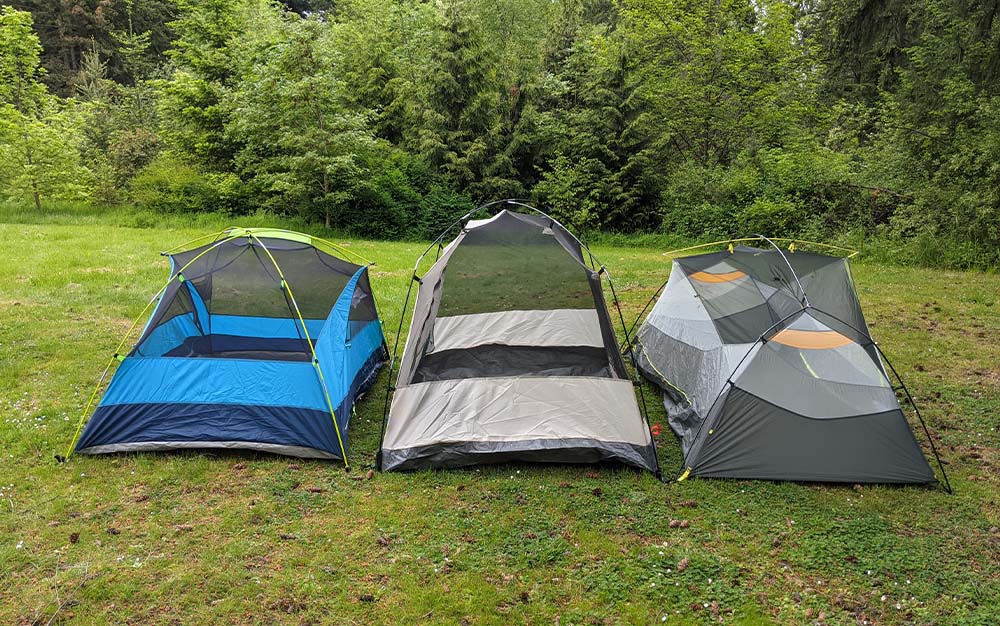
The drawback of this tent is that it is less intuitive to set up than others in my test—I had to go back to the directions multiple times to figure it out. The two poles, which are connected to the tent body (a boon to anyone who has ever forgotten their poles at home) snapped into place with the end sliding easily into a pouch on the opposite corner and the tabs clicking into place. But when it came time to put on the rainfly, it took some searching to figure out where the pole slid into the underside of the rainfly. But once it was set up, the trouble was worth it, as this is the best awning I’ve ever seen on a 2-person tent—better than a lot of four-person tents.
Despite being a 2-person tent, the Coleman Skydome only has one door, which is less than ideal if you are on the wrong side of the tent when nature calls in the middle of the night. Worse, the door is pretty small, limiting the view outside the tent on a buggy day. It also has only one dedicated mesh pocket on the interior for stashing odds and ends like headlamps and glasses, while other tents in our test have as many as three per person.
Things to Consider Before Buying a 2-Person Tent
Purpose
Campers can expect to face a variety of conditions depending on the time of year and the part of the country they are exploring, so knowing the extremes of likely conditions is essential for choosing a tent. The tents in this selection are three-season tents, which are appropriate for summer and shoulder-season conditions.
Set-Up
The majority of 2-person tents on the market are freestanding, which means that once you snap poles into their grommets, you’ll have a reasonable approximation of what the final structure will look like. Although, in many cases, staking out the tent will noticeably increase your usable floor space. Freestanding tents are a great choice for first-time tent purchasers, as there tends to be less guesswork during the initial set up. Many of the tents in this roundup also use color coding to signal to first-time users how to correctly align the poles, the tent body, and the rainfly.
Weight
Car camping tents, including pop-up tents and the best rooftop tents, are bulky. Even the lightest models weigh upwards of five pounds per person. The best backpacking tents are much lighter and typically weigh less than three pounds per person, with some ultralight (UL) models approaching one pound or less. There is usually a tradeoff with weight savings for durability and price with backpacking tents. Backpackers focused on short trips may prefer a heavier option while those that plan on high-mileage days would do better with a lightweight model.
Read Next: The Best Ultralight Tents
Size
A major reason individuals look for a 2-person tent is that a one-person tent is typically a tight squeeze for anyone over 5-foot 10 inches—forget about squeezing in your pack and the rest of your gear. It’s not uncommon to see larger individuals opt for 2-person, or even three-person, tents to get enough leg room. But there can also be substantial differences in headroom height between different tents.
Read Next: The Best One-Person Tents
FAQs
Two-person tents range in cost from less than $50 to upwards of $500, with rooftop tents typically costing upwards of $3,000. These price differences typically reflect the quality of material and construction, and, in the case of backpacking tents, weight differences.
Some 2-person tents can easily fit two people; others are more of a squeeze. I’ve indicated in the above awards whether a tent is a roomy fit, a comfortable fit, or a tight fit.
Most tents today have already been waterproofed, otherwise known as seam-sealed. But, over time, the seam-sealing on tents can start to wear down, and will need to be replaced. In a well-ventilated room (such as your garage), set up your tent, but place the rainfly on inside out. Then follow the instructions on your seam sealant (Gear Aid is a popular brand), being careful to avoid the zippers, to anywhere there is stitching on your tent, including where the guylines connect to the tent. When you’re done, simply wait 10 to 15 minutes for everything to dry.
To clean your 2-person tent at the end of your camping season, start by setting it up in a dry, well-ventilated room (such as a garage), and letting it dry overnight. Check the rainfly for any debris that might be stuck to it before packing it away. Next, open the door of your tent body, securing the mesh to the side. Pick up your tent and shake out any debris that is inside. Then, put your tent body away. Finally, inspect your poles and stakes for any debris before packing them into their respective stuff sacks. Store your tent in a dry area to ensure it’s operating in peak condition for next season.
Final Thoughts
There are a wide range of options on the market today for 2-person tents. We recommend choosing the best quality tent that your budget allows, as the weight-savings and reliability will pay dividends over the years.
- Best Overall: NEMO Dagger OSMO 2P
- Best Value: Sea to Summit Ikos 2
- Best Backpacking: Big Agnes Copper Spur HV UL2
- Best Roof Top Tent: iKamper Skycamp Mini
- Best Camping Tarp: Hyperlite Mountain Gear Ultralight Flat Tarp
- Best Budget: Coleman Skydome 2-Person Camping Tent
